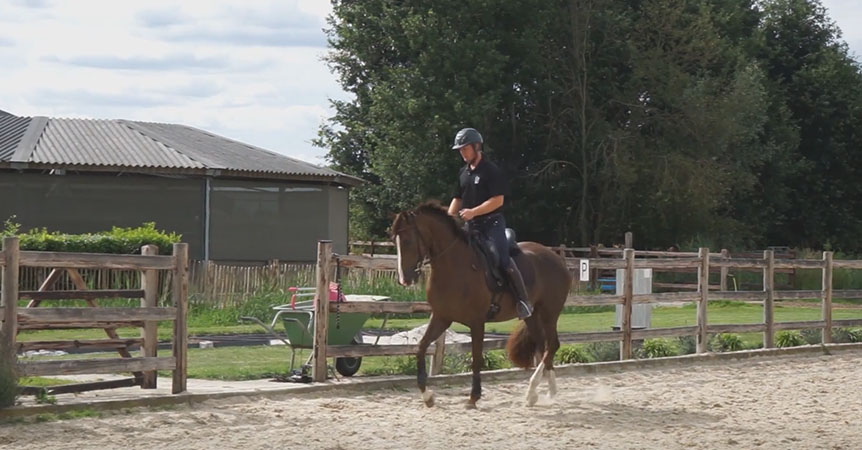How to control your own level of tension

How to control your own level of tension when your horse spooks If you have a horse that’s a little bit nervous or that’s prone to spooking, your anticipation to that spook is creating tension in your body. It’s a natural reaction, but it will definitely create tension and anticipation in your horse’s body as […]
Finding the solution when pressure is building up

Finding the solution when pressure is building up It can be quite challenging at times! Last year, I was at a practice show where I was helping someone at the warmin-up. That’s when I noticed a pony flying from one end of the arena to the other. I could feel the fear in the pony […]
Saddling without tension

How do you solve a horse tensing and cramping up during and after saddling? Tristan shows you.
Finding relaxation after trauma

Horses can learn to relax, even after traumatic experiences. Here’s how I helped a young mare.
What to do on your first ride in the outdoor arena [video]

When starting young horses, there will come a time where you go out to ride in a big, open-air arena for the first time. Or maybe you’re entering a new and perhaps challenging environment with your older horse. What is the best way to handle that?
Motivate your horse!

A horse that is very laid-back and maybe extremely lazy, often struggles to get himself motivated. How do you get those horses to be in control of themselves, how do they learn to give themselves a feeling of having energy, of being athletic, of being something that is feeling good? That’s where my Groundwork Wednesday comes in!
Spooky corner in the arena? Here’s how to pass it!

We’ve all had a horse not wanting to go near a scary corner, the door or the sun spots on the ground. Here’s a step by step how I handle these situations!
Paddock anxiety: how to help your horse relax

Not all horses are able to enjoy their grass with peace of heart and mind. Being out in a paddock is stressful for them, especially when the pasture’s new or when horses leave around them. But how can you help your horse?
Meet the mare named Electric Pleasure…

During TRT Live in the Netherlands, I had the pleasure to meet Electric Pleasure. This mare really lived up to her name! It took me quite a while to teach her that she didn’t have to rely on her natural instincts, but that she could manage herself instead. You can see clips from the demonstration […]
Horse’s SMS: a message for the horse

During the FEI Dressage World Cup Finals in Gothenburg, Sweden, I’ve been talking about the horse’s SMS: Self-Management System. Do you want to learn about a horse’s Self-Management System and preventing tension at competitions? Check out this free video series!